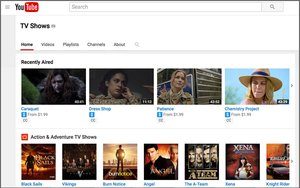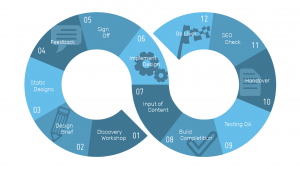Searching for a distributor can feel like a daunting task, but it’s not as overwhelming as most may fear. The best way to streamline the selection process is to do your homework, so you can have a clear understanding of exactly what you’re getting yourself into from the very beginning. Before you finalize your decision, there are a lot of variables to consider. To make sure you start this journey with your best foot forward, let’s discuss three major variables that could make or break the outcome of this venture.
Understand the Value of this Relationship
At first glimpse, this journey may seem like you’re meant to commit to endless meetings where you stand doe-eyed before a prized distributor pitching your product’s value to the company. When you really take a look at how this relationship is formed, you’ll begin to realize that benefits are shared across the board. In short, the distributor should be catering to you too!
It’s no secret that distributors can be really selective of the manufacturers they work with, but that’s for a good reason. Not only do these brands impact the distributor’s reputation – they benefit their bottom line as well.
You need to be as confident in your distributor as they are in you. While you’re searching for a provider that’s interested in expanding their horizons with the amazing product you’re laying out on the table, make sure you walk away from the situation feeling confident in the company’s ability to nurture your brand.
To find your business on the receiving end of the geographical expansion and skyrocketed sales that comes through joining forces with the right distributor is such a satisfying milestone in a budding company’s career. Just remember that you’re bringing plentyto the table as well.
(This is especially true if you decide to take the risk to partner with a distributor who hasn’t broken into your industry. There’s a lot to consider before making a commitment of that magnitude but, if you did, you’d send that distributor’s reputation into a brand new territory. Successfully carrying your brand would prove to future partners that they’re capable of managing their accounts as well.)
Search High and Low
The distributor you decide to partner with will leave a literal imprint on how well your brand impacts your industry on a regional, national, or global level. You may need to interview multiple prospects (possibly even choosing to work with more than one) to give your product the greatest advantage over the long term. Start building relationships with distributors even if they aren’t the right fit for you. You never know who they will know or how your circumstances may change.
To serve your immediate needs, make a short list of distributors you really want to work with. Do your homework. Vet them and make sure they carry products in your category and reach stores that service your demographic. Before finalizing your shortlist, make sure that you’ve done everything possible to locate prospects with the most potential.
- Ask around to get a list of the distributors your retailers trust
- Find out what distributors your competitors already have contracts with
- Look for distributors that manufacture allied or industry-related products
- Attend meetings, trade shows, and sales expos to network with market influencers
- Search libraries and online databases to find published directories and reviews (Make sure they’re updated!)
- Post ads and inquiries in trade publications or online forums to get insider information
Numbers Don’t Lie
In business, we all know that numbers are the name of the game. When we evaluate your strategy, from both the manufacturer and distribution company’s perspective, numbers dictate every move you make. Pay attention to the message the numbers relay – and don’t stress yourself with too many unknown variables.
- Request information or statistics that prove the distributor’s sales, growth, diversity, and marketing ability. Think about what the company can offer, in terms of reach – both geographically and its retail affiliations.
- Double check the stats shared by the distributor’s referrals and compare them to your intended projections.
- Prepare a detailed report explaining your current sales and marketing research and listen to the distributor’s plan to take your numbers closer toward your goals.
- Pay attention to the distributor’s current inventory and weigh it against estimated activity created by adding your brand.
- Evaluate the proposed distribution schedule – then assume it may take longer than expected – then match that timeline with your own plan.
Costs, fees (processing or storage), and payments are also some very important numbers to keep in mind. How much will you have to pay out of pocket to partner with each distributor? How much do you stand to return from that investment?
Overall, you need to find a distributor with core values you’d hang on your own wall. If you can mirror each other’s vision, you’re much more likely to benefit from a partnership.
Business & Finance Articles on Business 2 Community(56)
Report Post






